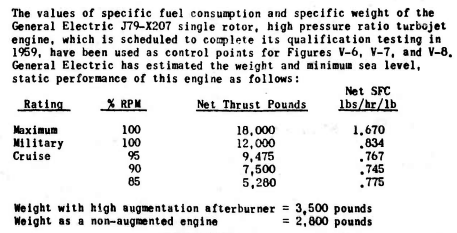From the G-111 thread: https://www.secretprojects.co.uk/threads/grumman-design-118-not-the-xf12f.491/, the production aircraft was proposed with J79-GE-207 engines.
As far as I know the proposed J79-GE-207 model is the only reference to a -200 series J79 that I know of.
Does anyone have further details of this or any other -200 series of the J79? Is it an evolution of the -7 variant?
Nathan
As far as I know the proposed J79-GE-207 model is the only reference to a -200 series J79 that I know of.
Does anyone have further details of this or any other -200 series of the J79? Is it an evolution of the -7 variant?
Nathan


